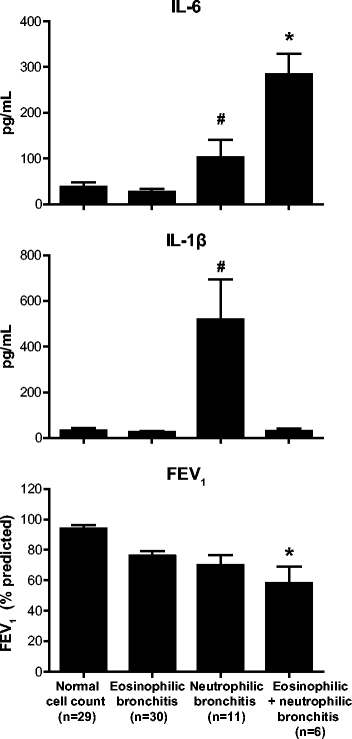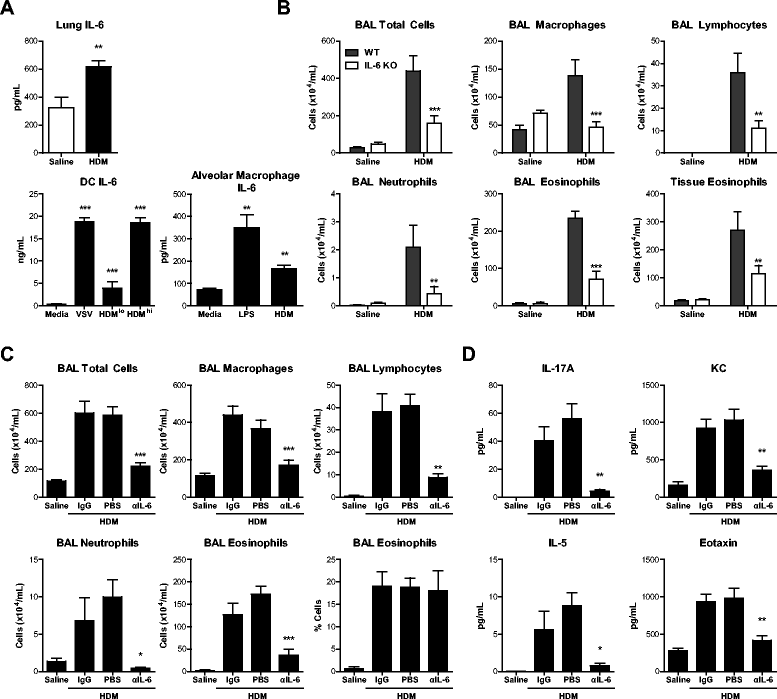Therapeutic potential of anti-IL-6 therapies for granulocytic airway inflammation in asthma
- PMID: 25878673
- PMCID: PMC4397814
- DOI: 10.1186/s13223-015-0081-1
Therapeutic potential of anti-IL-6 therapies for granulocytic airway inflammation in asthma
Abstract
Background: Determining the cellular and molecular phenotypes of inflammation in asthma can identify patient populations that may best benefit from targeted therapies. Although elevated IL-6 and polymorphisms in IL-6 signalling are associated with lung dysfunction in asthma, it remains unknown if elevated IL-6 levels are associated with a specific cellular inflammatory phenotype, and how IL-6 blockade might impact such inflammatory responses.
Methods: Patients undergoing exacerbations of asthma were phenotyped according to their airway inflammatory characteristics (normal cell count, eosinophilic, neutrophilic, mixed granulocytic), sputum cytokine profiles, and lung function. Mice were exposed to the common allergen, house dust-mite (HDM), in the presence or absence of endogenous IL-6. The intensity and nature of lung inflammation, and levels of pro-granulocytic cytokines and chemokines under these conditions were analyzed.
Results: Elevated IL-6 was associated with a lower FEV1 in patients with mixed eosinophilic-neutrophilic bronchitis. In mice, allergen exposure increased lung IL-6 and IL-6 was produced by dendritic cells and alveolar macrophages. Loss-of-function of IL-6 signalling (knockout or antibody-mediated neutralization) abrogated elevations of eosinophil and neutrophil recruiting cytokines/chemokines and allergen-induced airway inflammation in mice.
Conclusions: We demonstrate the association of pleiotropic cellular airway inflammation with IL-6 using human and animal data. These data suggest that exacerbations of asthma, particularly those with a combined eosinophilic and neutrophilic bronchitis, may respond to therapies targeting the IL-6 pathway and therefore, provide a rational basis for initiation of clinical trials to evaluate this.
Keywords: Airway inflammation; Allergy; Asthma; Bronchitis; Eosinophil; Granulocyte; House dust-mite (HDM); IL-6; IL-6R; Neutrophil.
Figures


References
Grants and funding
LinkOut - more resources
Full Text Sources
Other Literature Sources

